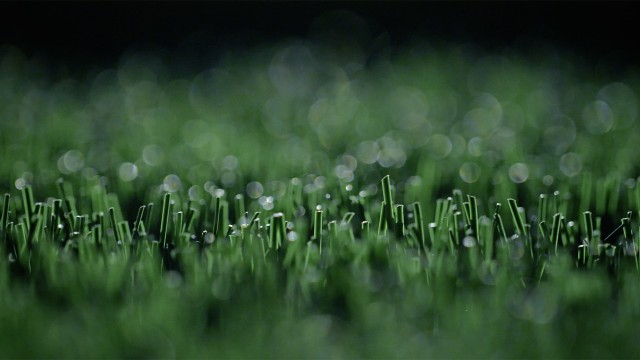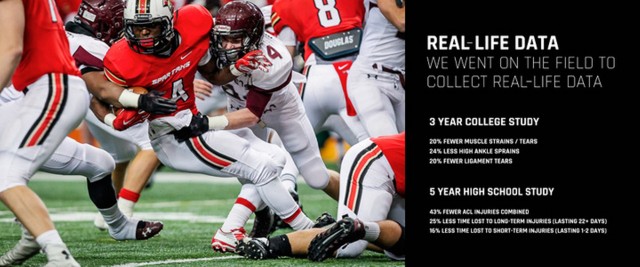When it comes to comparing the “Performance” and “Safety” of artificial turf to natural grass, many claim to have made the latest “breakthrough” without providing any real results. How can you break through the noise? Easy, trust the real-life data.
Traction, for instance, is one of the most difficult tests to measure in a laboratory as top researchers from leading institutions continue to modify and perfect lab models and attempt to correlate that data to real life scenarios.
FieldTurf was created for athletes, by athletes. Which is why our focus has always been to look at athlete exposures – specifically compared to natural grass. Let’s dig in to the data:
A 3-year study conducted by Dr. Michael Meyers, Department of Sport Science and Physical Education, Idaho State University, compared the Incidence, Mechanisms, and severity of game-related college football injuries on FieldTurf versus natural grass.
20% Fewer Muscle Strains / Tears 20% Fewer Ligament Tears 24% less High Ankle Sprains Source: American Journal of Sports Medicine - DOI: 10.1177/0363546509352464
Real results, from real athletes.
Another study lead by Dr. Michael Meyers came to similar conclusions. This time at the High School football level over a five year period. The study concluded that when compared to natural grass, FieldTurf systems lead to:
43 % Fewer ACL Injuries Combined
25% Less Time Lost to Long-Term Injuries (Lasting 22+ Days)
16% Less Time Lost to Short-Term Injuries (Lasting 1-2 Days)
Source: American Journal of Sports Medicine - DOI: 10.1177/0363546504266978
Real results, from real athletes.
Both of Dr. Meyers’ studies show when compared to natural grass, FieldTurf systems can lead to significantly lower injuries. Proven in a real life setting.
And, FieldTurf performs very well in laboratory testing too.
A study by Penn State University’s Center for Sports Surface Research, entitled ‘Comparison of Rotational Traction of Athletic Footwear on Varying Playing Surfaces’, shed new light on what affects rotational traction on artificial and natural sports surfaces.
Penn State’s study tested Kentucky Bluegrass (natural), FieldTurf Revolution (artificial) and two other leading artificial turf products. Each surface was tested in combination with 8 different shoe types and each shoe-surface combination was tested using three athlete weights.
The FieldTurf Revolution system produced the same level of traction as Kentucky Bluegrass.
Real-life data has shown that FieldTurf systems not only equal the premier natural grass systems but surpass their qualities in key elements such as reduces injuries and traction.


